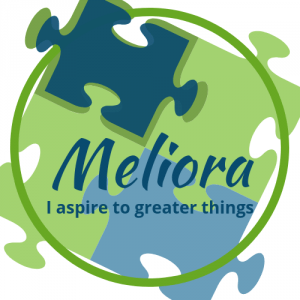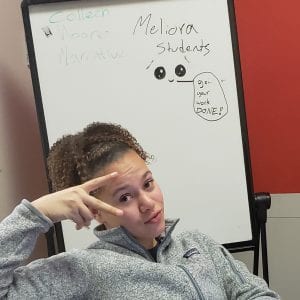Ginger Lewman is a dynamite speaker and workshop guru in the STE(A)M and Makerspace arenas. Check out her blog when you get the chance! I have yet to participate in one of her workshops, but can envision the energy and the “doing” going on as she leads students of all ages through a project. In many people’s minds, the idea of science, technology, engineering, and art all being “adaptable to” or even “led by” projects is reasonable.
I, on the other hand, am way more comfortable over in the Humanities house. History and Literature, yes! Some people have difficulty envisioning these topics being project-based. How do we learn all that content? What about commas and 5-paragraph essays? (Who ever uses a 5-paragraph essay in real life anyway? Especially one written in 25 minutes?) What about the names and dates of the many [dead white guys] of history? This must all be taught in a traditional, text-based, lecture-driven format, right? Wrong!
I was a participant in a recent Twitter #PBLchat (Tuesday evenings at 8:00 p.m. Eastern time for those interested) where the topic was whether AP courses can be successfully taught using #PBL. The first question we were asked was “What common misconceptions about PBL ( &/or AP) lead many folks to believe you can’t use PBL in an AP course?” Dayna Laur replied “Content coverage is the common misconception. Memorization has traditionally been key. New tests changes have challenged that!” I said “[a common misconception is] PBL, cannot cover required content for Ss to do well on the AP exam.” “Misconception=>PBL is too ‘fluffy & fun’ for AP” was Theresa Shafer’s reply. “There is such a focus on content and strict time constraints” was Tammy Estes Fry’s reaction. Similarly, Jason Reale said “Not enough time to cover the content and do PBL.”
So, if we PBL practitioners believe these are misconceptions, what is the reality of the learning necessary for students to do well on an AP exam? More generally, how can we effectively use PBL in the Humanities?
Dayna Laur’s book Authentic Learning Experiences tackles this question head-on. Two points she makes have stayed with me. Dayna emphasizes the importance of making PBL inquiries authentic. What does this mean? In a 2006 editorial in the Journal of Authentic Learning, Audrey Rule writes that there are four characteristics which are regularly found in authentic learning experiences: “real-world problems that engage learners in the work of professionals; inquiry activities that practice thinking skills and metacognition; discourse among a community of learners; and student empowerment through choice.” In contrast to this definition, “projects” have often been make-work in disguise. “We have a project to make a poster…” “You will re-enact [dead white guy’s] life.”
The other point that struck me from Dayna’s book is that inquiries must be relevant to the students. The best real-world inquiry may flop if the students cannot relate to it.
Which brings me back to [dead white guys]. No student, regardless of ethnicity, cares about [dead white guys], unless he/she can develop a connection. So, why do we insist on portraying history as a series of “important” names and dates that consists of [dead white guys] students don’t identify with? We need instead to make it alive and relevant to them.
Our Meliora students are currently reading Genghis: Birth of an Empire, a historical novel of Genghis Khan’s early life and rise to power. Although their experiences are far removed from Genghis’ life on the steppes of Central Asia, the students are caught up in the adventure of the story. They can also identify with being a child and a teen. At various junctures, we ask our students what their reaction might be if they were in Genghis’ shoes. This requires them to reflect, and to compare the realities of life in Genghis’ place and time with the realities of life today, in the United States. We also challenge our students to identify leaders they are familiar with, both past and present, who exhibit leadership characteristics similar to Genghis’. This helps them begin to identify patterns in history, and to come to their own conclusion that the past is relevant to today and tomorrow.
Although we do not teach an AP course, we can nonetheless draw parallels between what we do at Meliora and the expectations of the AP World History course. There are five themes which thread throughout the AP course. We have extensively discussed two of the themes as we have journeyed through Genghis Khan’s early life — “State-Building, Expansion, and Conflict,” and “Development and Transformation of Social Structures.” We have not done this through a dry textbook and rote memorization, but rather through discussions around an exciting adventure story which we use to make connections between Genghis’ time and our own. We have also done in-class research when students lack clarity on a certain question or topic.
Another AP World History objective, as defined in the course overview, is to “[l]earn to apply historical thinking skills including the ability to craft arguments from evidence; describe, analyze and evaluate events from a chronological perspective; compare and contextualize historical developments; and analyze evidence, reasoning and context to construct and understand historical interpretations.”
Our students accomplish this every year with the multiple projects they develop. For each project, they are required to define and argue a thesis, which they support with extensive evidence gathered from primary and secondary sources. Their argument takes the form of a written narrative, a spoken narrative, or a dramatic performance. To ensure relevance, we allow broad voice and choice in their topic, as long as they remain within the National History Day theme.
Throughout the project development, which consists of many iterations, we constantly challenge the students with questions like “why?” “how do you know?” “what about…” “where is your evidence?” The students ask each other the same kinds of questions during peer reviews. The requirement to think critically, and to communicate their understanding does not end in the classroom. At each increasingly competitive level of History Fair, the students must defend their projects before a new panel of judges. Not only does this provide them with a significant public audience, but it requires them to clearly communicate what they have learned.
An example of a project that substantiates PBL as an effective methodology for the Humanities has Michael Jordan at the center. Not surprisingly, the student who created this project is passionate about basketball. He started his exploration of the topic with the knowledge that Jordan had an enormous economic impact on Chicago because of his ability to draw fans to Chicago Bulls games. The student also knew that the popularity of Jordan’s merchandise gave a boost to the national economy. What the student did not understand was Jordan’s impact on urban renewal near the United Center (stadium). Prior to launching into this project, I don’t think he knew anything about urban renewal. However, due to his research into the topic, and in order to properly develop and support his thesis, the student had to broaden and deepen his view of the “Jordan Effect.” His project went on to become a national contender at National History Day.
You don’t need to take my word for it. National History Day reports that
“[i]n 2010, Rockman et al, an educational evaluation firm based in Bloomington, Indiana, finished a multiyear study that analyzed the impact of National History Day on student learning… NHD students outperform their non-NHD peers on standardized tests in all topic areas — including reading, science, and math, as well as social studies…NHD students learn 21st Century college- and career-ready skills. They learn to collaborate with team members, talk to experts, manage their time, and persevere…NHD students are critical thinkers who can digest, analyze, and synthesize information.”
 We all agonized through the obligatory announcements. Finally, the moment of truth arrived. Ploddingly, the announcer named the NHD qualifiers for other categories. She arrived at documentaries, backtracked, then spoke… “Senior level, group documentary… Colleen Moore…” Hysteria erupted among the Meliora contingent, beginning with the parents. The students were stunned, then raced up to collect their medals and to await the photo opps. Jubilant, I ran with my camera to capture their joy.
We all agonized through the obligatory announcements. Finally, the moment of truth arrived. Ploddingly, the announcer named the NHD qualifiers for other categories. She arrived at documentaries, backtracked, then spoke… “Senior level, group documentary… Colleen Moore…” Hysteria erupted among the Meliora contingent, beginning with the parents. The students were stunned, then raced up to collect their medals and to await the photo opps. Jubilant, I ran with my camera to capture their joy.
